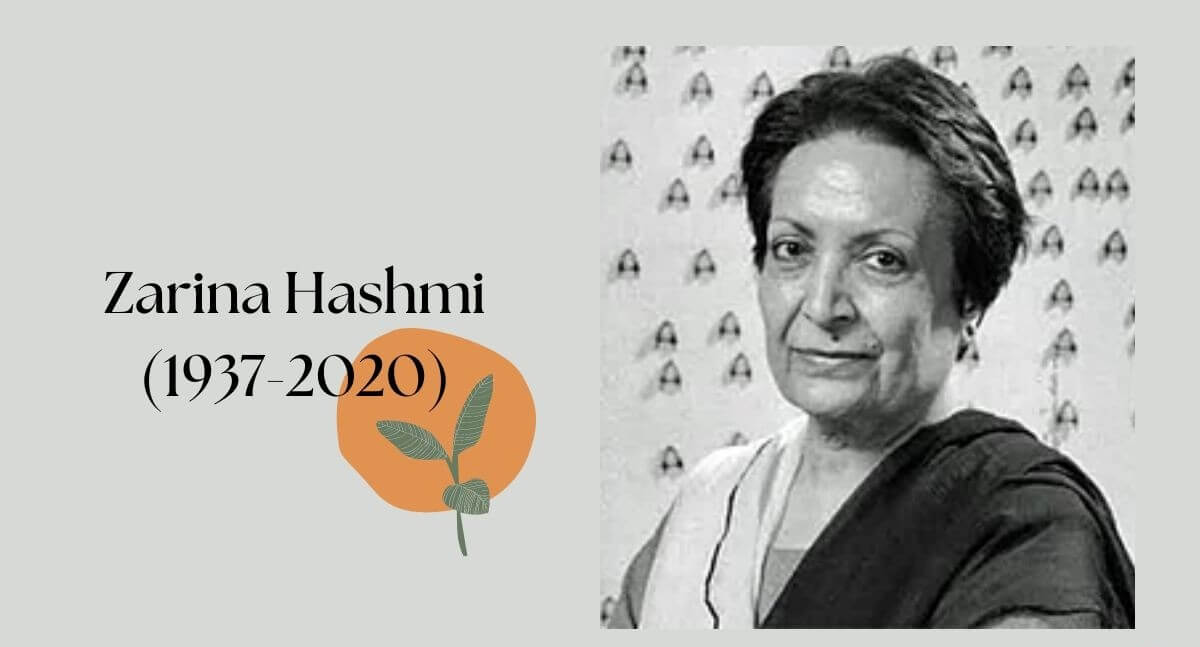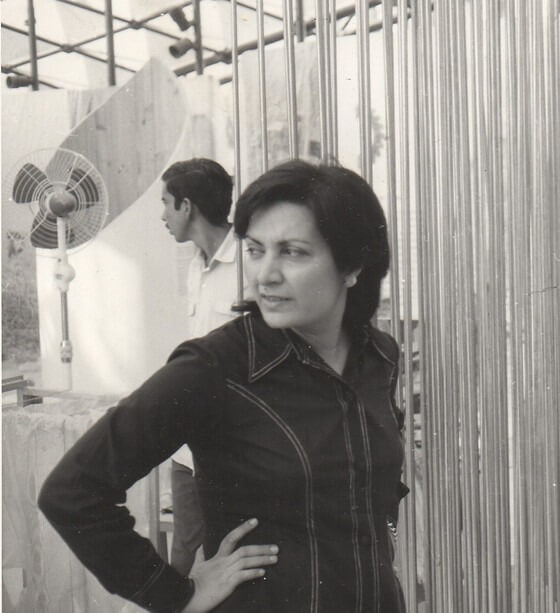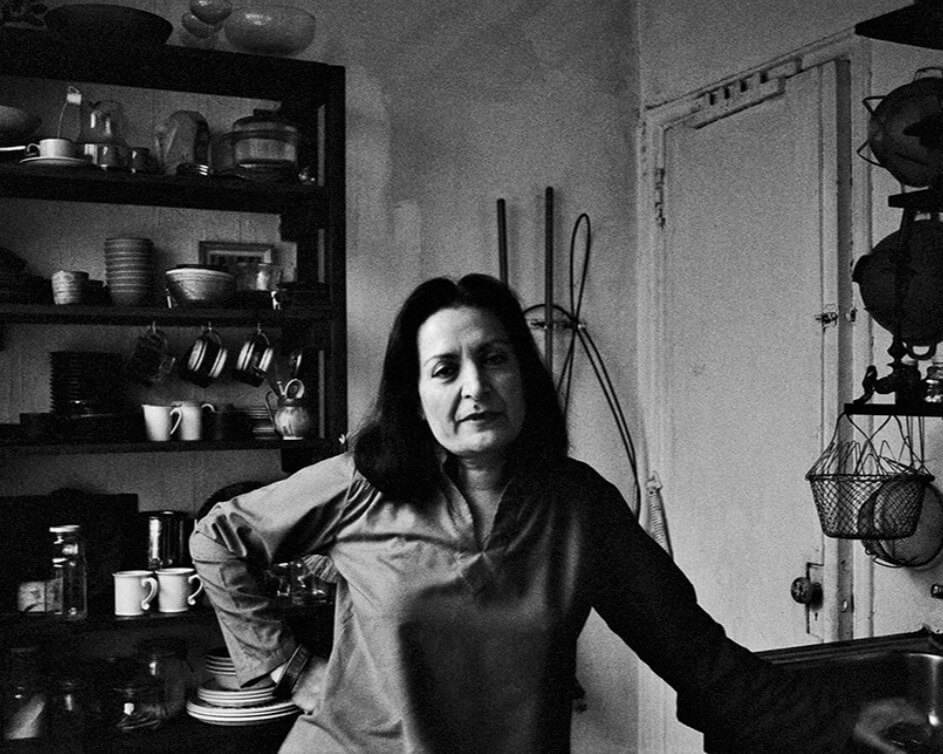
Celebrating Zarina Hashmi's 86th Birthday, the Artistic Legacy
Celebrating Zarina Hashmi’s 86th Birthday
Introduction
Today we are celebrating Zarina Hashmi’s 86th birthday. Renowned for her poignant and thought-provoking works, Zarina has left an indelible mark on the art world with her exploration of identity, displacement, and memory. When we reflect on his life and artistic journey, it is impossible not to be struck by his works’ depth and emotional resonance.

Why Google Celebrating Zarina Hashmi’s 85th Birthday?
Early Life and Artistic Beginnings
Born on July 16, 1937, in Aligarh, India, Zarina Hashmi, popularly known as Zarina, grew up in an environment deeply influenced by the upheavals of Partition. This tumultuous phase of Indian history left a deep impression on him, shaping his artistic sensibilities and themes. Her father’s job with the Indian Railways caused the family to move frequently, deepening their sense of displacement and instability.
Zarina’s artistic journey began in the early 1960s when she moved to Bangkok and took up printmaking. This medium would soon become his signature style, allowing him to express his feelings and experiences in a unique and poetic language. His early works were marked by a simplicity of form and texture, reflecting his fascination with lines, grids, and minimalist aesthetics.
Throughout her artistic explorations, Zarina was inspired by her mentor, painter S.W. Was very impressed with Heiter, who introduced him to the art of printmaking at Atelier 17 in Paris. Hayter’s guidance and encouragement played a significant role in shaping his artistic vision and technique.

Discovery of Identity and Displacement
Throughout her career, Zarina has deeply understood the complexities of human identity and the impact of displacement. Having lived in various countries including Thailand, France, Germany, and the United States, she struggled with the concept of “home” and what it really meant. This exploration inspired him to create artwork that spoke to the shared experiences of countless individuals who had to leave their homeland in search of solace in universal feelings of loss, nostalgia, and longing.
His experiences of exile and emigration informed some of his most powerful works. The series “Letters from Home” (2004) reflects his fascination with the exchange of personal letters between family members separated by geographic boundaries. Incorporating fragments of handwritten letters and maps, Zarina transformed these intimate correspondences into powerful symbols of communication and connection across distances.
His series “Home is a Foreign Place” (1999) remains one of his best-known collections, featuring elements such as maps, borders, and his own handprints. These prints express a sense of connection to her homeland while also acknowledging the distance and isolation that time and space can impose. Using materials symbolic of geographic boundaries, Zarina draws attention to the current theme of displacement in her life and the lives of countless others.

Incorporating Traditional Craftsmanship
https://www.zarina.work/ work was not only intellectually intense but also aesthetically stunning. He mastered traditional craftsmanship techniques such as woodblock printing and marble inlay, and skillfully merged them with modern artistic expressions. The use of handmade paper and delicate printing methods add an intimate touch to his creations, inviting the viewer to engage in the tactile and sensory experience.
His fascination with geometric patterns, often inspired by Islamic art, instilled a sense of rhythm and harmony in his works. These patterns served as symbolic representations of the underlying order she wanted to find amidst the chaos of displacement and the impermanence of existence.
In her later years, Zarina incorporated her love for architecture and its intricate design elements into her art. The architectural motifs became metaphors for the human body, memory and the emotional space these constructions held in his mind. The power of his work lies not only in the use of these motifs, but also in the intense emotional resonance achieved through them.
Recognition And Influence
Over the years, Zarina has received numerous accolades and international recognition for her outstanding contributions to the world of art. His works have been displayed in major museums and galleries around the world, cementing his position as a globally respected artist. Despite her fame, she remained grounded and committed to her craft, always willing to experiment and push the boundaries of her creativity.
In 1963, Zarina moved to the United States, where she immersed herself in the vibrant artistic scene of New York City. He developed friendships and professional relationships with prominent artists such as Ellsworth Kelly and Louise Bourgeois. These interactions enriched her artistic perspective and provided a supportive community in which her creativity could flourish.
Zarina’s influence extended far beyond her own actions. As a teacher and mentor, he inspired countless young artists to discover their identity and delve into personal narratives through their art. His workshops and lectures at prestigious institutions including the University of California, Santa Cruz and the Pratt Institute have made him an influential figure in fostering the next generation of artists.
Her contributions to contemporary art have been recognized with various awards, including a National Endowment for the Arts Fellowship and the Women’s Caucus for Art Lifetime Achievement Award. Zarina’s ability to bring her personal experiences and emotions to the fore in her work has touched the hearts of many, making her a well-known figure in the art world.

Legacy And Influence
Zarina Hashmi’s artistic legacy is as relevant and powerful today as it was when she first emerged on the art scene. His ability to evoke universal emotion through his personal experiences connects with audiences on a deeply human level. She paved the way for South Asian women artists, breaking barriers and breaking stereotypes in the male-dominated art world.
Her exploration of themes such as identity, displacement and memory has inspired a new generation of artists to delve deeper into their history and create meaningful relationships with their roots. Zarina’s art is a testament to the power of storytelling through visual language, as she encourages artists to embrace their personal narratives and use them as a catalyst for creative expression.
The profound impact of Zarina’s work has extended to institutions and collectors around the world, with her art finding its way into renowned museums, private collections and galleries. Museums such as the Guggenheim Museum, the British Museum, and the Whitney Museum of American Art have all displayed his work, underscoring its enduring importance in the art world.
Conclusion
As we celebrate Zarina Hashmi’s 86th birthday, we pay tribute to a visionary artist who touched the hearts of people across the world. Through his art, he captures the essence of the human experience, highlighting profound themes of identity, displacement, and belonging. His artistic journey continues to inspire and challenge us to confront our own emotions and narratives.
In a world that is constantly evolving, Zarina’s timeless works are poignant reminders of the shared humanity that binds us all. As we celebrate his birthday, we also celebrate the lasting impact of his work and the legacy he left behind for future generations of artists and art lovers. Happy birthday, Zareena Hashmi! Your art will continue to inspire generations to come and evoke emotions.






